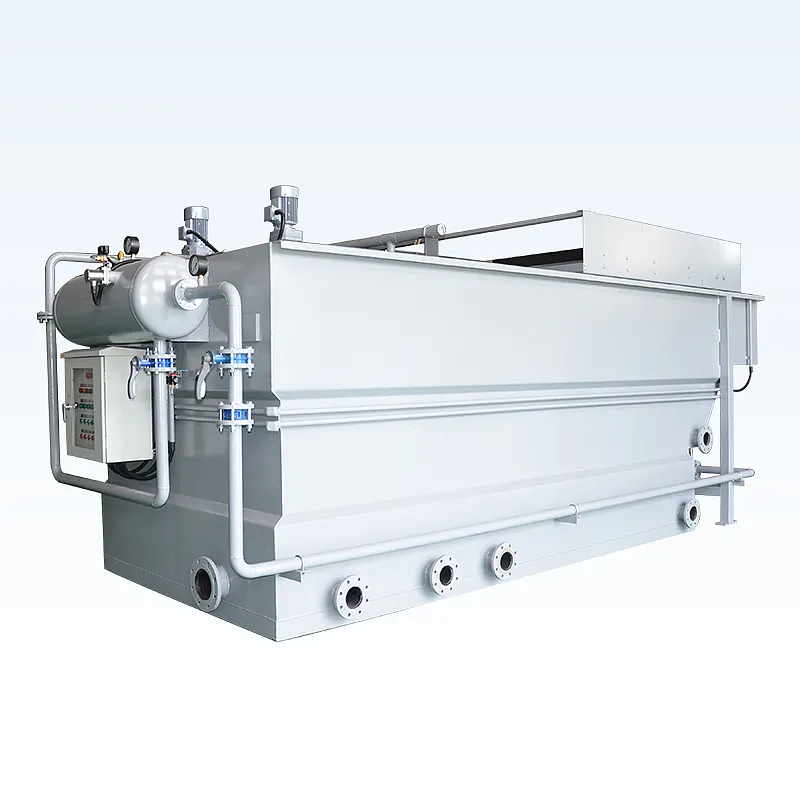Air flotation operation and system principle:
Air flotation separation is the process of dissolving air and water to the maximum extent possible under certain pressure and conditions, striving to be in a saturated state. Then, the formed pressure dissolved water is released through a special device, rapidly generating a large number of micro bubbles that come into full contact with the suspended solids in the water (flocs after dosing). During the "net capture" of the particles, the bubbles and suspended solids form a stable air entrained floc with a density lower than that of water, Therefore, under the action of "wrapping" and "bridging" of the air entrained flocs, the body quickly rises to the water surface, and the suspended solids aggregate into scum on the liquid surface. The scum is scraped and removed, achieving the goal of solid-liquid separation.
The effectiveness of solid-liquid separation mainly depends on the following two aspects:
1. The characteristics of flocs formed by the addition of suspended solids in water bodies are hydrophilicity or hydrophobicity (appropriate dosage).
2. In the mixed reaction, ensure that there are sufficient microbubbles in timely and sufficient contact with the floc.
3. In the separation reaction, the mixture of solid, gas, and liquid should have an appropriate residence time and a stable flow pattern, so that the "air entrained floc" floats to the liquid surface and forms scum. Controlling the flow state of the liquid is one of the keys to the effectiveness of separation.
Applicable industries for air flotation machines:
1. Industrial wastewater pre-treatment: wastewater from industries such as food processing, pharmaceuticals, textile printing and dyeing, semiconductors, machinery, steel, chemicals, aquaculture, etc
2. Sewage treatment plant: sewage pretreatment, standard improvement, phosphorus removal
3. Waterworks: algae removal
4. Ecology: River and lake water purification, landscape water treatment
5. Seawater desalination engineering
Features and advantages:
Complete set, compact structure, and high cost-effectiveness
Large market share, high maturity, stable performance, and reliable operation
Hydraulic load: 4~6m3/(m2. h)
The allowable concentration of suspended solids can reach 3000mg/L
The scum can be automatically dispersed, with a solid content of up to 30-100g/L
Applied to water quality where the density of solid flocs is generally lighter or closer to water, and the precipitation phenomenon is weak
 Service hotline:
Service hotline:

 Español
Español
 ภาษาไทย
ภาษาไทย
 عربي ،
عربي ،
 русский язык
русский язык
 Portugiesisch
Portugiesisch
 Vietnamese
Vietnamese







